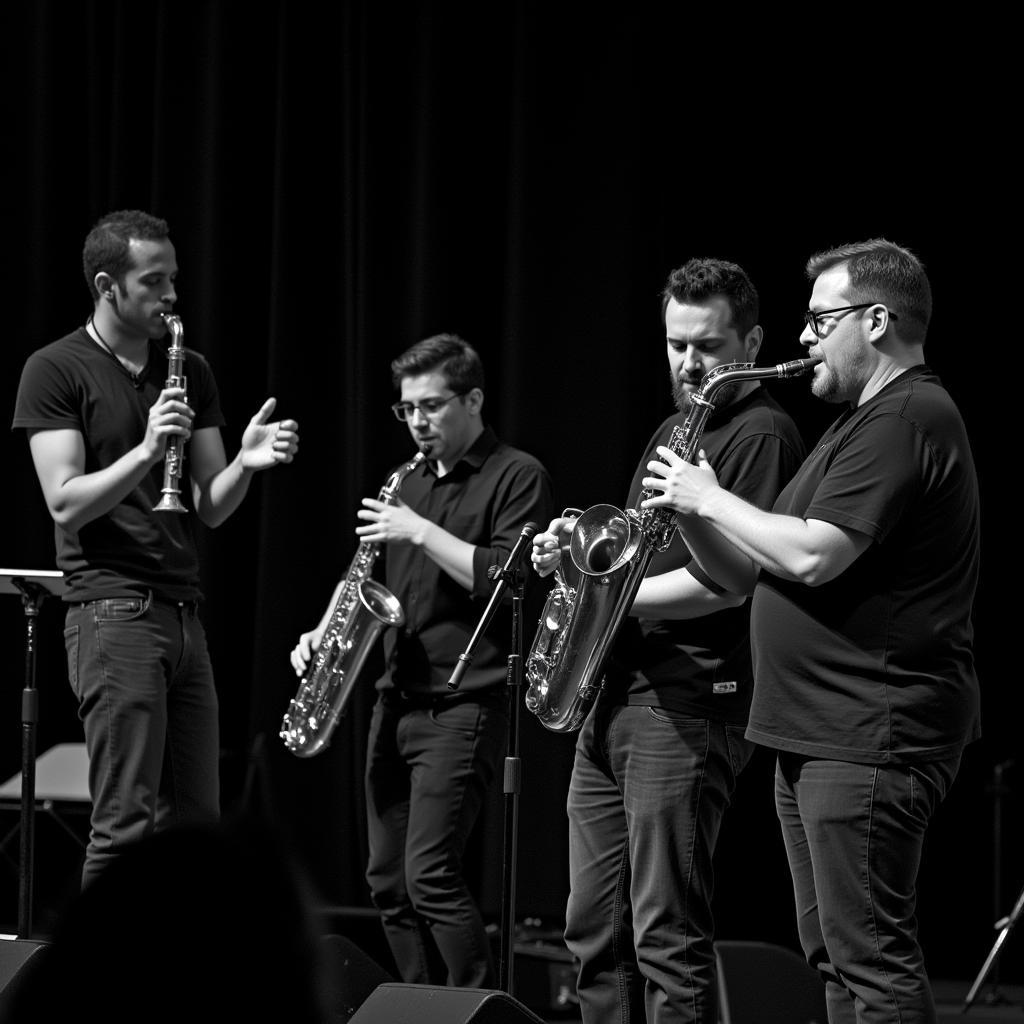Free jazz, a genre known for its experimental nature and departure from traditional harmonic structures, can be a challenging but rewarding listen. Finding the “best” albums is subjective, as taste varies widely, but some recordings stand out as essential explorations of this improvisational art form.
Essential Free Jazz Albums for Beginners and Beyond
 Ornette Coleman – The Shape of Jazz to Come
Ornette Coleman – The Shape of Jazz to Come
Ornette Coleman’s “The Shape of Jazz to Come” (1959) is often cited as a pivotal moment in the genre’s development. Coleman’s quartet, with its unusual instrumentation and disregard for conventional chord changes, created music that was both jarring and exhilarating. This album challenged the very definition of jazz and paved the way for a wave of free improvisation.
John Coltrane’s “Ascension” (1965) is another landmark recording, showcasing Coltrane’s spiritual and musical evolution. This sprawling, multi-part suite features a large ensemble of some of the era’s most innovative musicians, including Archie Shepp, Pharoah Sanders, and McCoy Tyner. “Ascension” is a powerful and demanding listen, a testament to Coltrane’s relentless pursuit of musical freedom.
Exploring the Avant-Garde: Free Jazz’s Diverse Sounds
Beyond these seminal works, the world of free jazz offers a diverse range of sounds and approaches. Cecil Taylor, known for his percussive piano playing and atonal compositions, pushed the boundaries of improvisation with albums like “Unit Structures” (1966) and “Conquistador!” (1967).
Sun Ra, a visionary bandleader and composer, created a unique cosmic mythology through his music, blending free jazz with elements of big band swing, electronic music, and ancient Egyptian themes. Albums like “The Heliocentric Worlds of Sun Ra, Volume One” (1965) and “Space Is the Place” (1973) are essential listening for anyone interested in the outer limits of jazz.
The Legacy of Free Jazz: From Experimentation to Fusion
Free jazz continues to influence contemporary music, from avant-garde classical to experimental rock and electronic music. The spirit of improvisation and the willingness to break down musical barriers are hallmarks of this enduring genre.
 Free Jazz Musicians on Stage
Free Jazz Musicians on Stage
What are some key characteristics of free jazz albums?
Free jazz albums often feature:
- Improvisation as a primary element
- Atonality and the absence of traditional chord progressions
- Extended techniques and unconventional use of instruments
- Collective improvisation and a focus on group interplay
- A wide range of emotional intensity and dynamic shifts
Conclusion: Embracing the Freedom of Sound
Exploring the world of free jazz can be a challenging but ultimately rewarding experience. These albums, while just a starting point, offer a glimpse into a genre that continues to push the boundaries of musical expression. By embracing the unknown and the unexpected, free jazz invites us to listen with open ears and to appreciate the power of improvisation.